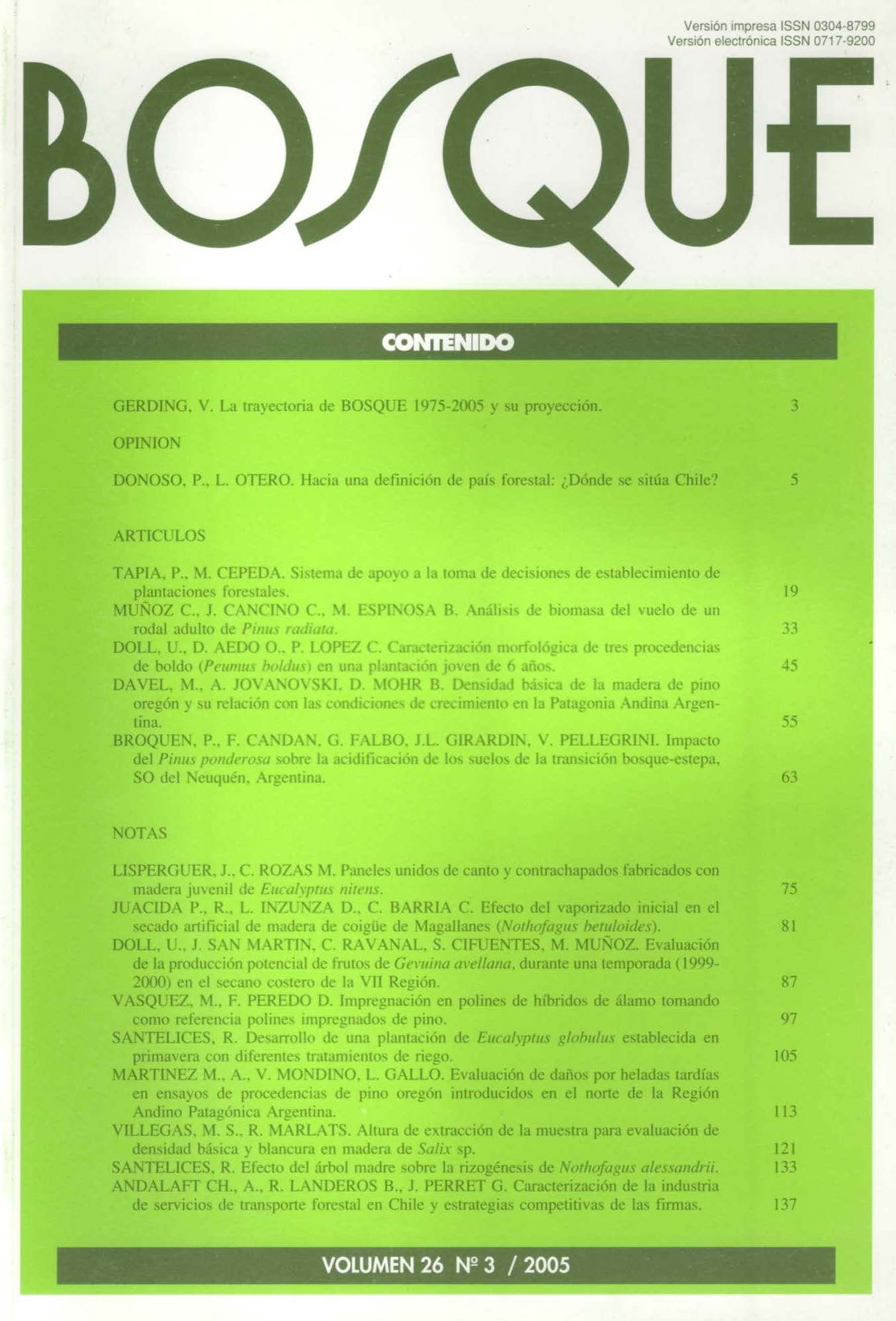Sampling height for basic density and brightness evaluation in wood of Salix sp.
Main Article Content
Abstract
The aim of the present work was to find the optimum sampling point representative for the whole tree, for basic density and brightness evaluation, in two Salix clones growing in two different sites of Delta of Paraná, Argentina. Thirty-two trees were sampled, aged 8 to 13 years old. Disks were taken at three heights, called “predictive sections” (1.30 m, 25% and 65% of commercial height). Radial variation was studied by sampling each wood disk in two opposite cardinal directions at three points of the radius (33%, 66% and 100% of its length), amounting to 18 sampling positions in each tree. The parameter estimation of the whole tree and predictive sections was calculated as weighted mean values. The relationship between whole tree and predictive sections values was quantified using linear regression analysis. The breast height (1.30 m) was the best level for predicting American willow mean basic density and hybrid willow mean brightness of the whole tree, when the fittings obtained were considered. The 25% and 65% of commercial height were the most appropriate levels for predicting mean brightness in the hybrid and mean basic density in the American clone, respectively.

